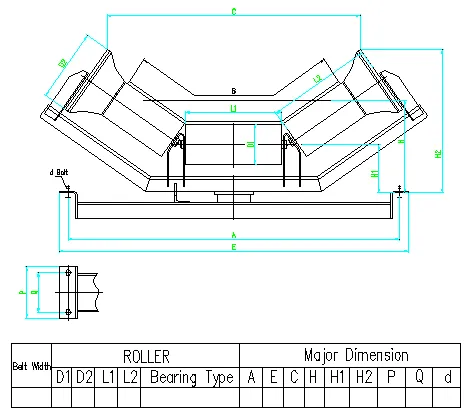 Afrikaans
Afrikaans  Albanian
Albanian  Amharic
Amharic  Arabic
Arabic  Armenian
Armenian  Azerbaijani
Azerbaijani  Basque
Basque  Belarusian
Belarusian  Bengali
Bengali  Bosnian
Bosnian  Bulgarian
Bulgarian  Catalan
Catalan  Cebuano
Cebuano  Corsican
Corsican  Croatian
Croatian  Czech
Czech  Danish
Danish  Dutch
Dutch  English
English  Esperanto
Esperanto  Estonian
Estonian  Finnish
Finnish  French
French  Frisian
Frisian  Galician
Galician  Georgian
Georgian  German
German  Greek
Greek  Gujarati
Gujarati  Haitian Creole
Haitian Creole  hausa
hausa  hawaiian
hawaiian  Hebrew
Hebrew  Hindi
Hindi  Miao
Miao  Hungarian
Hungarian  Icelandic
Icelandic  igbo
igbo  Indonesian
Indonesian  irish
irish  Italian
Italian  Japanese
Japanese  Javanese
Javanese  Kannada
Kannada  kazakh
kazakh  Khmer
Khmer  Rwandese
Rwandese  Korean
Korean  Kurdish
Kurdish  Kyrgyz
Kyrgyz  Lao
Lao  Latin
Latin  Latvian
Latvian  Lithuanian
Lithuanian  Luxembourgish
Luxembourgish  Macedonian
Macedonian  Malgashi
Malgashi  Malay
Malay  Malayalam
Malayalam  Maltese
Maltese  Maori
Maori  Marathi
Marathi  Mongolian
Mongolian  Myanmar
Myanmar  Nepali
Nepali  Norwegian
Norwegian  Norwegian
Norwegian  Occitan
Occitan  Pashto
Pashto  Persian
Persian  Polish
Polish  Portuguese
Portuguese  Punjabi
Punjabi  Romanian
Romanian  Russian
Russian  Samoan
Samoan  Scottish Gaelic
Scottish Gaelic  Serbian
Serbian  Sesotho
Sesotho  Shona
Shona  Sindhi
Sindhi  Sinhala
Sinhala  Slovak
Slovak  Slovenian
Slovenian  Somali
Somali  Spanish
Spanish  Sundanese
Sundanese  Swahili
Swahili  Swedish
Swedish  Tagalog
Tagalog  Tajik
Tajik  Tamil
Tamil  Tatar
Tatar  Telugu
Telugu  Thai
Thai  Turkish
Turkish  Turkmen
Turkmen  Ukrainian
Ukrainian  Urdu
Urdu  Uighur
Uighur  Uzbek
Uzbek  Vietnamese
Vietnamese  Welsh
Welsh  Bantu
Bantu  Yiddish
Yiddish  Yoruba
Yoruba  Zulu
Zulu vertical roller
The Advantages of Vertical Roller Mills in Modern Industry
In the realm of industrial milling, vertical roller mills (VRMs) have emerged as a game changer, revolutionizing the way materials are processed in various sectors, including cement, mining, and even the agricultural industries. These machines are engineered to offer unparalleled efficiency and quality, but what exactly makes them stand out? In this article, we will explore the key benefits of vertical roller mills and their extensive applications in modern industry.
What is a Vertical Roller Mill?
A vertical roller mill is a type of grinding machine that utilizes the gravitational force and pressure exerted by rollers on a bed of material to break it down into a fine powder. Unlike traditional mills, which operate horizontally, VRMs have a vertical orientation, allowing for a more compact design and reduced footprint. This configuration also provides greater operational flexibility and reduces energy consumption.
Efficiency and Energy Savings
One of the most significant advantages of vertical roller mills is their energy efficiency. They typically consume less power than traditional ball mills due to their unique grinding mechanism. VRMs achieve a fine particle size at a substantially lower energy cost, making them an attractive choice for manufacturers aiming to reduce operational expenses.
Moreover, the design of a vertical roller mill minimizes waste and maximizes output
. Its ability to finely grind various materials, including clinker, raw meal, and minerals, results in a high-quality product that meets specific industrial standards. By optimizing the grinding process, VRMs help industries lower their carbon footprint, contributing to sustainable production practices.Versatility in Material Processing
Vertical roller mills are highly versatile and capable of processing a wide range of materials. From cement and coal to minerals and other bulk materials, VRMs can effectively handle various feed types. This versatility is a significant advantage for industries that require different types of raw materials for their production processes.
vertical roller

Furthermore, VRMs can efficiently grind materials with varying moisture content and hardness levels. This adaptability ensures that manufacturers can maintain productivity and quality, even when dealing with challenging raw materials.
Space-saving Design
The vertical orientation of roller mills offers a compact and space-saving design that is particularly advantageous in industries where floor space is at a premium. Traditional horizontal mills require a larger operational footprint, while VRMs need less space and can often be integrated into existing facilities with relative ease. This compact design not only reduces the initial capital costs involved in construction and setup but also facilitates easier maintenance and access.
Reduced Noise and Vibration
Another benefit of vertical roller mills is their ability to minimize noise and vibration levels during operation. Traditional grinding methods can often generate significant noise, posing challenges in urban environments or near residential areas. VRMs, on the other hand, operate more quietly, contributing to a safer and more comfortable workplace.
The reduced vibration associated with vertical roller mills also enhances the durability of the equipment. Less vibration means less wear and tear, leading to lower maintenance costs and a longer lifespan for the machinery.
Conclusion
In summary, vertical roller mills represent a significant advancement in milling technology, offering numerous benefits that meet the demands of modern industry. From energy efficiency and versatility in material processing to space-saving designs and reduced noise levels, VRMs are well-equipped to address the challenges faced by manufacturers today. As industries continue to evolve, the adoption of vertical roller mills is likely to increase, positioning them as a quintessential tool in optimizing production processes and enhancing overall operational efficiency. In a world where sustainability and efficiency are paramount, vertical roller mills stand out as a key asset for future growth and innovation.
-
Revolutionizing Conveyor Reliability with Advanced Rubber Lagging PulleysNewsJul.22,2025
-
Powering Precision and Durability with Expert Manufacturers of Conveyor ComponentsNewsJul.22,2025
-
Optimizing Conveyor Systems with Advanced Conveyor AccessoriesNewsJul.22,2025
-
Maximize Conveyor Efficiency with Quality Conveyor Idler PulleysNewsJul.22,2025
-
Future-Proof Your Conveyor System with High-Performance Polyurethane RollerNewsJul.22,2025
-
Driving Efficiency Forward with Quality Idlers and RollersNewsJul.22,2025





























